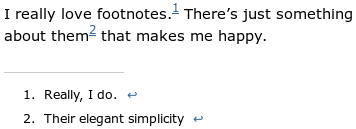Author Submission Guidelines
The author should not be identifiable from the text.
Notes and references should be created manually in square brackets and inserted in the running text [1].
Please include on a separate page the title, abstract, and brief biographical information along with the author’s contact details.
Articles should be between 5,000 and 10,000 words, including notes. Longer texts of special significance will also be received.
The article must not be submitted to or under consideration by another publication.
Manuscripts should be double-spaced, page numbered and laid out with one-inch margins. References should be arranged using the Chicago Humanities style (Notes and Bibliography) and placed at the end of the article. They should include all the material used in the article, be organized alphabetically and double-spaced.
Abstracts
Please include an abstract of up to 300 words.
Illustrations and tables
Places for illustrations should be clearly marked in text in caps and bold:
<INSERT ILLUSTRATION1.JPG HERE> and include captions.
Submit illustrations in a separate folder.
The author is responsible for obtaining permissions for copyrighted material. Please contact us for image release forms should they be needed.
Formatting
American or English spelling may be used if followed consistently.
Titles of books and projects in text should be italicized.
Please use single quotation commas for citation unless there is a citation inside cited material.
To emphasize text, use italics, but not bold or underlined. For contested terms, use single quotation marks.
Licenses
Contributors may assign any license to the use of their article. This may include the use of ‘open’ licenses, the assumption of piracy, the claim of copyright, or the use of anticopyright.
Citations and references
Please use Chicago Humanities style (Notes and Bibliography). For guidance see: Chicago Manual of Style
Manuscript Preparation Guidelines
If your article is to be published we ask you to do a small amount of mark-up on the text as follows.
Marking up italics
Please mark up all italicised words, including book, software or journal titles etc. by using the emphasis tag: <em>this is my italic text</em>
Marking up headings
Please use the h2 tag to identify headings: <h2>Heading</h2>.
Please use the h3 tag to identify sub-headings: <h3>Subheading</h3>.
Marking up code snippets
Please use the pre tag to mark up code snippets and other text that should be specially formatted:: <pre>my code text</pre>
Mathematical formulae
we use the MathJax plug-in for formulae, which entails a simple mark-up.
Marking up footnotes
Computational Culture uses the FD Footnotes Plug-in. In order to add notes and references to your text, please follow the following instructions:
Adding notes and references to a post is simple. Just type them inline in your text in square brackets like this:

Each footnote must have a number followed by a period and a space and then the actual footnote. They don’t have to be unique but it is recommended. It doesn’t matter what the numbers are since the footnotes will be automatically renumbered when the post is displayed.
NB please do not include any other square brackets in the text of the footnote, apart from the two indicating the start and end of the footnote.
For example, this:

…produces this:
